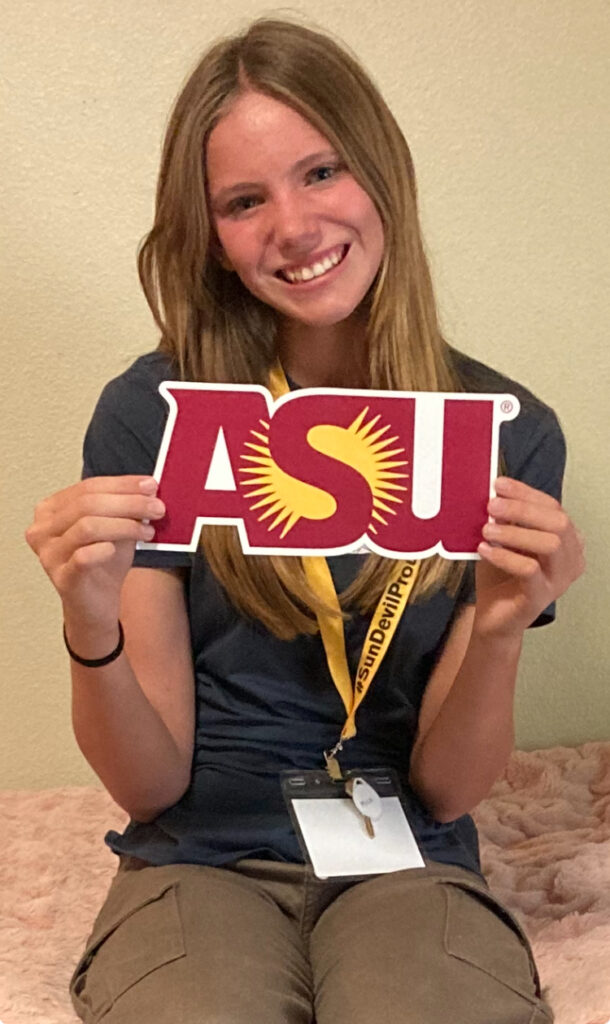My name is Mica and I am a Chief Science Officer at the Science Vortex in Verde Valley, AZ. I am 14 years old and about to take Sports Medicine at my high school. This will help set me up for my dream career of being a biomedical engineer.

In the eighth grade, I went to the Barrett Scholars camp at ASU, and met a student who was going to ASU to become a biomedical engineer. He told me Sports Medicine would be an important class for me to take to achieve my goal, and that I would need to learn human anatomy. This inspired me, as I have always been interested in learning about the bones, muscles, and overall anatomy of the human body, When I was little, I originally wanted to be a veterinarian and help animals, but later learned I was a bit squeamish around blood.
I always hoped to go into a STEM field such as medicine or engineering. It turns out, biomedical engineering is the best of both worlds! This field focuses on using engineering to solve biological and medical problems to improve health care. Biomedical engineering bridges the gap between medicine and engineering. The most well known parts of biomedical engineering are components such as artificial organs, prosthetics, and medical equipment, although there are eight total specialty areas that include:
- Bioinstrumentation is the design and research used to develop medical devices for the healthcare industry.
- Biomaterials is the engineering of substances to interact with biological systems.
- Biomechanics is the application of mechanics by figuring out the structure and motion of the body.
- Cellular and tissue engineering is the use of physics, engineering, and chemistry to study cellular interactions.
- Clinical engineering is the use of biomedical research and instruments in the health care world.
- Orthopedic bioengineering focuses on the joints of the body and how to improve function.
- Rehabilitation engineering is the practice of developing devices that assist those with disabilities.
- Systems physiology is the use of engineering to understand how every living thing functions.
There is an additional part of biomedical engineering that I also find interesting — research using stem cells for transplants. These stem cells can be used for the regeneration of cardiac, neutral, and orthopedic tissues and could be the future of healthcare and change the medical field. I love science and stem cell research is a great way to apply my love of the scientific field.
Overall, biomedical engineering is an interesting career with many pathways, and it approaches both the medical field and engineering to help us understand the human body better. If you are looking for a stem career and want to make an impact, biomedical engineering is for you!